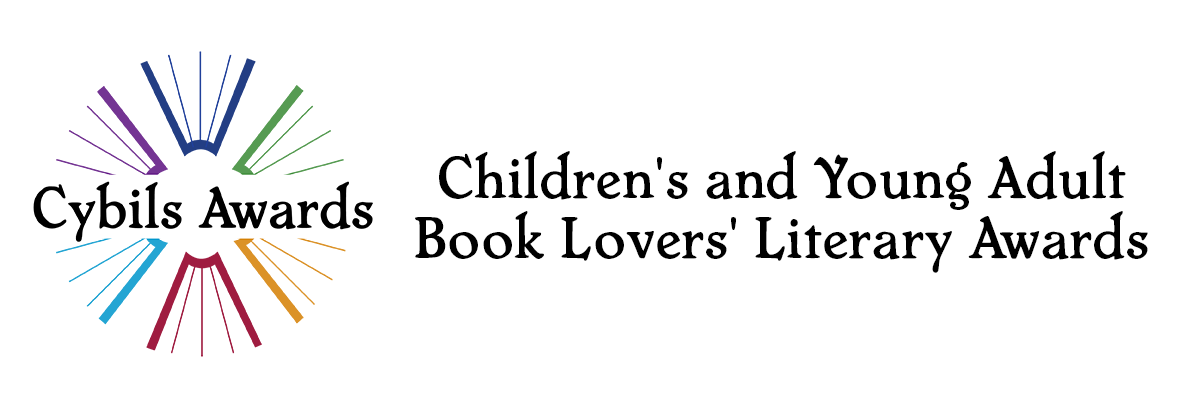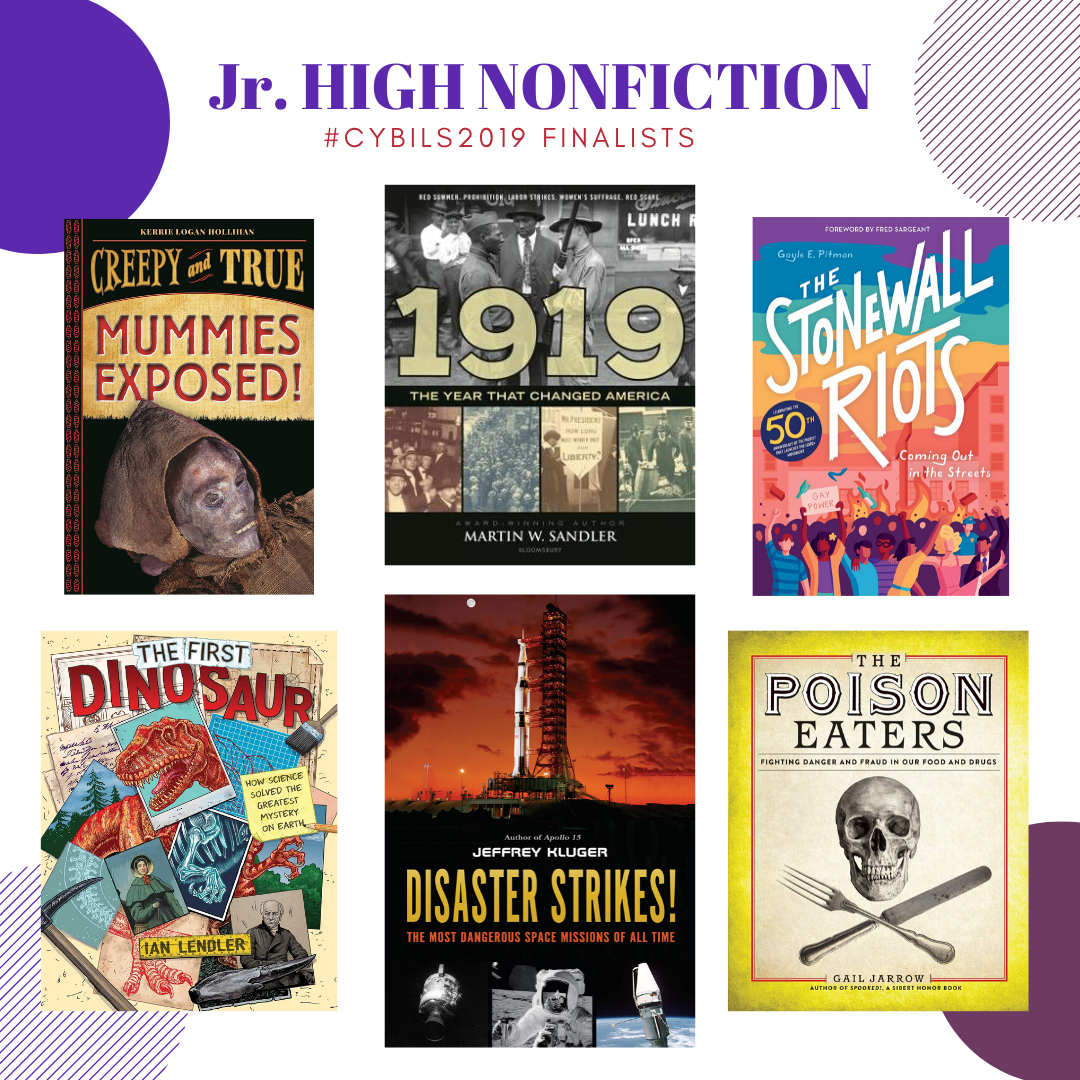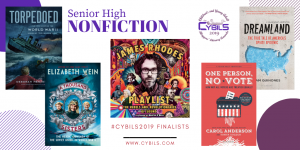Junior High Non-fiction
1919 The Year That Changed America (Amazon, IndieBound)
by Martin W. Sandler
Bloomsbury USA
Nominated by: Jennifer Naughton
One hundred years ago, a momentous year full of extraordinary events would change America forever. Many issues at the forefront of American society following the end of World War I manifested themselves through several events: the Great Molasses Flood, the Red Summer Chicago race riot, the Red Scare, women’s suffrage, labor strikes across America, and Prohibition. More than simply learning about specific historical events, readers discover how the zeitgeist of the time period led to upheavals, tragedies, and positive changes. Full of pictures and timelines at the end of each chapter, this book makes history relevant and appealing.
Disaster Strikes!: The Most Dangerous Space Missions of All Time (Amazon, IndieBound)
by Jeffrey Kluger
Philomel
Nominated by: Cindy Mitchell
The Space Race of the 1960s led to many remarkable achievements. The competition between the Soviet Union and the United States created a lot of pressure on both sides to move forward quickly. In some cases this resulted in disaster. Twelve such disasters are recounted by the author in chronological order. Starting with the Liberty Bell 7 spacecraft that nearly sunk in the ocean in 1961 after returning from suborbital orbit, and concluding with the almost drowning of Italian astronaut Luca Parmitano in 2013, each chapter highlights a disaster that struck explaining what happened and why. A fascinating collection of experiences that highlight the risks involved in exploring space.
Mummies Exposed!: Creepy and True #1 (Amazon, IndieBound)
by Kerrie Logan Hollihan
Abrams Books for Young Readers
Nominated by: Adrienne Gillespie
Mummies are not just found in ancient Egyptian pyramids. In Mummies Exposed Hollihan tells (and shows through fascinatingly grotesque photographs) about mummies that have been found all around the world. In fact, there have been mummies that have been discovered recently—from Peru to China to the bogs of Great Britain—and with every new mummy that is found science learns a little more about the people who lived thousands of years ago yet are still around today in all their mummified glory.
Stonewall Riots: Coming Out in the Streets (Amazon, IndieBound)
by Gayle E Pitman
Abrams Books for Young Readers
Nominated by: Joanna Marple
The colors don’t lie — this book deliberately aims to be a kaleidoscope history of LGTBQ people centered around the Stonewall Riots, with each chapter featuring some object as a gem that flashes in the shifting vision. Pittman gives many different views of the events from various perspectives, some very focused but others beginning long before or continuing afterward so that the events of Stonewall are clearly placed in history. In addition, she shows how history itself is written by looking at many different sources, some contradictory, so that any story of the past will not be absolutely sharp but will reflect the nature of the evidence the historian uses to tell the tale. Young teens will enjoy the story of a flashpoint in history while also absorbing lessons in the nature of historical records themselves.
The First Dinosaur: How Science Solved the Greatest Mystery on Earth (Amazon, IndieBound)
by Ian Lendler
Margaret K. McElderry
Nominated by: Charlotte
Today the entire world knows what a dinosaur is; however, once upon a time people had no idea that giant lizards walked the earth. In First Dinosaur Lendler leads readers through how scientists worked piece by piece (or fossil by fossil) to figure out just exactly what these giant lizards were, when they lived, and what they were like. He also shows how often a few wrong ideas could lead to a new thought through the scientific process that helped us learn more about what we now know are dinosaurs.
The Poison Eaters: Fighting Danger and Fraud in our Food and Drugs (Amazon, IndieBound)
by Gail Jarrow
Calkins Creek Books
Nominated by: Heidi G.
Before the FDA was created people didn’t know what was in their food. Anything from formaldehyde to borax could be used to help keep foods looking good before being canned, boxed, and sold to an unsuspecting public. Dr. Harvey Washington Wiley wanted people to know what they were eating—in fact he thought it the public’s right to have foods labeled so that the public would know what was “pure food” and what wasn’t. In this book Jarrow explains how Dr. Wiley and others worked—sometimes through questionable experiments such as when they fed poison to people—to help the public know what was happening to their food, drugs, or cosmetics so they could make informed decisions.
Senior High Non-Fiction
A Thousand Sisters: The Heroic Airwomen of the Soviet Union in World War II (Amazon, IndieBound)
by Elizabeth Wein
Balzer + Bray
Nominated by: Kimberly F
World War II books are not in short supply and it takes a unique and special title to offer something new to the conversation. Elizabeth Wein’s A Thousand Sisters is one of these books, telling the tale of Joseph Stalin’s female pilots. The Soviet Union was the first country to allow females to serve a fighter pilots. These women were infamously referred to as the “night witches.” Through this gripping book, readers learn about Marina Raskova and her quest to become a female fighter pilot against what feels like insurmountable odds to her founding the infamous Night Witches and the multiple regiments of female aviators as well as what the war was like on the eastern front. Filled with back matter such as source notes, this book is an excellent entry into aviation, the Soviet Union’s role in World War II, and female/gender roles during this time period.
Dreamland (YA edition): The True Tale of America’s Opiate Epidemic (Amazon, IndieBound)
by Sam Quinones
Bloomsbury YA
Nominated by: Melissa Fox
In this young adult adaptation Quinones explains America’s opiate epidemic. From the heartland of America where pain pills like OxyContin were prescribed by doctors who barely knew their patients to Mexico where members of a community started selling black tar heroin in the United States as a way to pull their families out of poverty—Quinones explains it all and puts a face to one of the greatest epidemics the country has seen. The opiate epidemic has killed so many and affected the lives of millions more.
One Person, No Vote (YA edition): How Not All Voters Are Treated Equally (Amazon, IndieBound)
by Carol Anderson and Tonya Bolden
Bloomsbury YA
Nominated by: Benedict
To young people, voting may seem like a straightforward process: register, show up, cast a vote. However, Carol Anderson’s research shows young adult readers the history of unconstitutional voter rights suppression in America, beginning with Reconstruction and concluding with the significance of the Shelby County v. Holder Supreme Court case. She includes specific examples of several states purging voter rolls as well as how gerrymandering can disproportionately affect the disabled, poor, and minority groups. Her narrative writing style interweaving research with individual stories of voting rights injustice will convince young readers on the brink of voting themselves to sit up, take notice, and register.
Playlist: The Rebels and Revolutionaries of Sound (Amazon, IndieBound)
by James Rhodes, illustrated by Martin O’Neill
Candlewick Studio
Nominated by: Katy Manck
This book is a love song to music that the author finds expressive, personal, and inspiring. He wants to share that love with the world. Rhodes, a professional musician, knows a lot about this material but he also remembers what it is like to be unfamiliar with it. He speaks directly to the reader, confronting their possible expectations about “classical” music and then pulls aside the curtain to show the tumultuous times and people who created his picks, how each piece affects him and how to approach the sound and the creation of the works. It’s absolutely worth listening along with the playlist he provides. Visually the book is stunning, echoing the emotions the music evokes. Even the kids who don’t get that the book looks like a record album will appreciate the way it brings the classic and the contemporary together.
Torpedoed: The True Story of the World War II Sinking of “The Children’s Ship” (Amazon, IndieBound)
by Deborah Heiligman
Henry Holt
Nominated by: Celebrate Science
On September 17, 1940, one hundred children slept in their berths on board the passenger ship, SS City of Benares. As part of the Children’s Overseas Reception Board (CORB) program, these children were being sent from Great Britain to Canada to keep them safe from the ongoing bombing occurring as a result of the recently begun World War II. Unknown to those on the ship, a German U-boat patrolled nearby waiting to take out British ships. Despite the rough weather, the U-boat sent two torpedoes to strike the lead ship in the convoy, the SS City of Benares. While only one of the torpedoes struck the ship it was enough to sink the ship. Heiligman tells the story of this sinking through the accounts of survivors, rescuers, and families left behind. While unable to tell the stories of everyone on board, she includes the stories of some of the children, caretakers, crew members, and other passengers. This well-written, compelling account of a war-created tragedy reminds readers that soldiers aren’t the only ones to suffer during war time.













